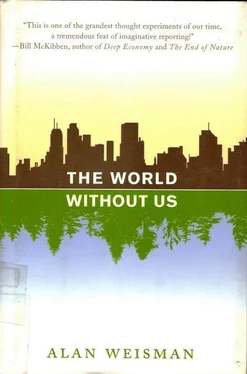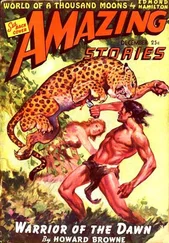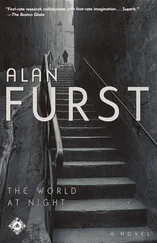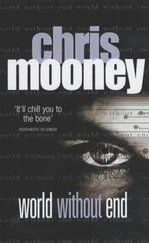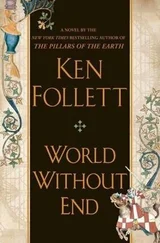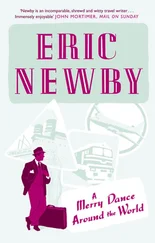Yet there was one exception: New England, one of the first places where colonists arrived to stay, which may partly explain the familiar misconception of an entire virgin continent.
“There’s now an understanding,” says Harvard ecologist David Foster, “that precolonial eastern America had an agriculturally-based, maize-dependent large population with permanent villages and cleared fields. True. But that’s not what we had up here.”
It is a delicious September morning in deeply wooded central Massachusetts, just below the New Hampshire border. Foster has paused in a stand of tall white pines, which just a century earlier was a tilled wheat field. In their shady understory, little hardwoods are sprouting—maddening, he says, to timbermen who came after New England farmers had departed for points southwest and who thought they had a ready-made pine plantation.
“They spent decades of frustration trying to get white pine to succeed itself. They didn’t get that when you cut down the forest, you expose a new forest that rooted in its shade. They never read Thoreau.”
This is the Harvard Forest outside the hamlet of Petersham, established as a timber research station in 1907 but now a laboratory for studying what happens to land after humans no longer use it. David Foster, its director, has managed to spend much of his career in nature, not classrooms: at 50, he looks 10 years younger—fit and lean, the hair falling across his forehead still dark. He bounds over a brook that was widened for irrigation by one of the four generations of the family who farmed here. The ash trees along its banks are pioneers of the reborn forest. Like white pine, they don’t regenerate well in their own shade, so in another century the small sugar maples beneath them will replace them. But this is already a forest by any definition: exhilarating smells, mushrooms popping through leaf litter, drops of green-gold sunlight, woodpeckers thrumming.
Even in the most industrialized part of a former farm, a forest resurges quickly here. A mossy millstone near a tumble of rocks that was once a chimney reveals where a farmer once ground hemlock and chestnut bark for tanning cowhides. The mill pond is now filled with dark sediment. Scattered firebricks, bits of metal and glass, are all that remain of the farmhouse. Its exposed cellar hole is a cushion of ferns. The stone walls that once separated open fields now thread between 100-foot conifers.
Over two centuries, European farmers and their descendants laid bare three-quarters of New England’s forests, including this one. Three centuries more, and tree trunks may again be as wide as the monsters that early New Englanders turned into ship beams and churches—oaks 10 feet across, sycamores twice as thick, and 250-foot white pines. The early colonists found untouched, huge trees in New England, says Foster, because, unlike other parts of precolonial North America, this cold corner of the continent was sparsely populated.
“Humans were here. But the evidence shows low-density subsistence hunting and gathering. This isn’t a landscape prone to burning. In all New England, there were maybe 25,000 people, not permanently in any one area. The postholes for structures are just two to four inches across. These hunter-gatherers could tear down and move a village overnight.”
Unlike the center of the continent, says Foster, where large sedentary Native American communities filled the lower Mississippi Valley, New England didn’t have corn until AD 1100. “The total accumulation of maize from New England archeological sites wouldn’t fill up a coffee cup.” Most settlements were in river valleys, where agriculture finally began, and on the coast, where maritime hunter-gatherers were sustained by immense stocks of herring, shad, clams, crabs, lobsters, and cod thick enough to catch by hand. Inland camps were mainly retreats from harsh coastal winters.
“The rest,” says Foster, “was forest.” It was a human-free wilderness, until Europeans named this land after their own ancestral home and proceeded to clear it. The timberlands the Pilgrims found were the ones that emerged in the aftermath of the last glaciers.
“Now we’re getting that vegetation back. All the major tree species are returning.”
So are animals. Some, like moose, have arrived on their own. Others, like beavers, were reintroduced and have taken off. In a world without humans to stop them, New England could return to what North America once looked like from Canada to northern Mexico: beaver dams spaced regularly on every stream, creating wetlands strung like fat pearls along their length, filled with ducks, muskrats, willets, and salamanders. One new addition to the ecosystem would be the coyote, currently trying to fill the empty wolf niche—though a new subspecies may be on the rise.
“The ones we see are substantially larger than western coyotes. Their skulls and jaws are bigger,” says Foster, his long hands describing an impressive canine cranium. “They take larger prey than coyotes in the West, like deer. This probably isn’t sudden adaptation. There’s genetic evidence that western coyotes are migrating through Minnesota and up across Canada, interbreeding with wolves, then roaming here.”
It’s fortunate, he adds, that New England’s farmers left before nonnative plants flooded America. Before exotic trees could spread across the land, native vegetation again had a roothold on their former farmlands. No chemicals had been spaded into their soils; no weeds, insects, or fungi here had ever been poisoned to help other things grow. It’s the nearest thing to a baseline of how nature might reclaim cultivated land—against which to measure, for example, old England.
Like most British trunk roads, the Ml motorway that runs north from London was built by Romans. In Hertfordshire, a jog at Hempstead leads to St. Alban’s, once a substantial Roman town, and beyond that, to the village of Harpenden. From Roman times until the 20th century, when they became bedroom commutes to London, 30 miles away, St. Alban’s was a center for rural commerce, and Harpenden was flat farmland, the conformity of its grain fields disrupted only by hedgerows.
Long before the Romans appeared in the first century AD, the dense forests of the British Isles began coming down. Humans first arrived 700,000 years ago, likely following herds of aurochs, the now-extinct wild Eurasian cattle, during glacial epochs when the English Channel was a land bridge, but their settlements were fleeting. According to the great British forest botanist Oliver Rackham, after the last ice age, southeastern England was dominated by vast stands of lindens mixed with oaks, and by abundant hazels that probably reflect the appetites of Stone Age gatherers.
The landscape changed around 4,500 BC, because whoever crossed the water that by then separated England from the Continent brought crops and domestic animals. These immigrants, Rackham laments, “set about converting Britain and Ireland to an imitation of the dry open steppes of the Near East, in which agriculture had begun.”
Today, less than 1/100 of Britain is original forest, and essentially none of Ireland. Most woodlands are clearly defined tracts, bearing evidence of centuries of careful human extraction by coppicing, which allowed stumps to regenerate for building supplies and fuel. They remained that way after Roman rule gave way to Saxon peasantry and serfdom, and into the Middle Ages.
At Harpenden, near a low stone circle and adjacent stem wall that are the remains of a Roman shrine, an estate was founded in the early 13th century. Rothamsted Manor, built of bricks and timbers and surrounded by a moat and 300 acres, changed hands five times over as many centuries, accruing more rooms until an eight-year-old boy named John Bennet Lawes inherited it in 1814.
Читать дальше
